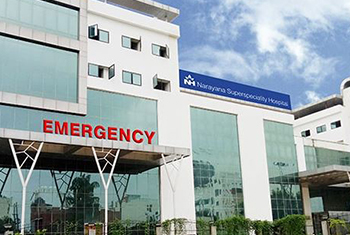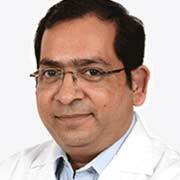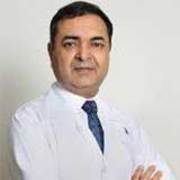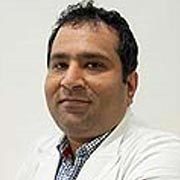Treatment of brain aneurysms
The treatment for symptomatic aneurysm involves repairing the blood vessels. This requires surgery by a neurosurgeon. The two common treatment options for a ruptured brain aneurysm are –
Aneurysm Clipping: This is a surgical procedure to close off the aneurysm. A neurosurgeon operates on the brain by removing a section of the skull to access the aneurysm in the brain. The surgeon locates the blood vessel that supplies blood to the aneurysm. Then a tiny metal clip is put across the neck to cut off the blood flow to it. It stops blood from entering the aneurysm and decreases the pressure on it. This prevents its further growth or rupture.
However, whether this surgery can be performed on a patient depends on several factors, such as the location of the aneurysm, its size, and the patient’s overall health.
Endovascular coiling or embolization: This procedure is less invasive than surgical clipping. The surgeon or an interventional neurologist inserts a catheter, a hollow plastic tube, into an artery in the groin and guides it through the body to the aneurysm.
In coil embolization, soft metal coils of platinum wires or latex are moved through the catheter tube to fill the aneurysm. This prevents blood from entering into the aneurysm and makes it less likely to rupture.
Another endovascular treatment option is Flow diversion devices. This method includes placement of a small stent or flexible mesh tube, similar to that used for heart blockage treatment, into the artery to reduce the flow of blood into the aneurysm.
Similar to coil embolization procedure, the surgeon inserts a catheter into an artery, usually in the groin, and guides it through the body to the artery that feeds the aneurysm. This method is used to treat aneurysms of very large size and those that cannot be treated with surgical clipping or platinum coil embolization.
All these procedures pose potential risks, particularly aneurysm rupture, bleeding in the brain or loss of blood flow to the brain.
Other treatment options include:
Certain treatments aim to control the symptoms and reduce complications. These include:
Anti-seizure drugs or anticonvulsants: to help prevent seizures related to a ruptured aneurysm.
Calcium channel-blocking drugs: to reduce the risk of stroke due to vasospasm
Painkillers to treat severe headache
A shunt: A medical device, such as ventriculoperitoneal (VP) shunt is used to funnel out the excess of cerebrospinal fluid from the brain to other parts of the body. This device is surgically placed into the brain after rupture and if the build-up of cerebrospinal fluid, a condition called hydrocephalus, is putting harmful pressure on the brain.
Rehabilitative therapy: People who have suffered an aneurysm rupture often need different types of therapies including physical, speech, and occupational. These help them regain some lost functions and learn to manage with any permanent disability.
Treatment of unruptured aneurysm:
Surgical clipping and endovascular coiling or flow diverter device can be used to seal the unruptured brain aneurysm. However, small aneurysms that aren’t causing any symptoms or haven’t ruptured may not require any treatment. In such cases, where the risk of rupture is low, generally a policy of active observation is normally followed.
Active observation means that immediate surgery is not done on the patient, instead they have regular check-ups to carefully monitor the aneurysm.
If a person is living with an unruptured brain aneurysm, the doctor will recommend certain lifestyle changes to help lower the risk of rupture in the future. This includes:
- Quit smoking
- Stop using cocaine or other recreational drugs
- Eat a healthy balanced diet
- Have an active life
- Avoid lifting heavy things and cut off caffeine as these can raise your blood pressure












